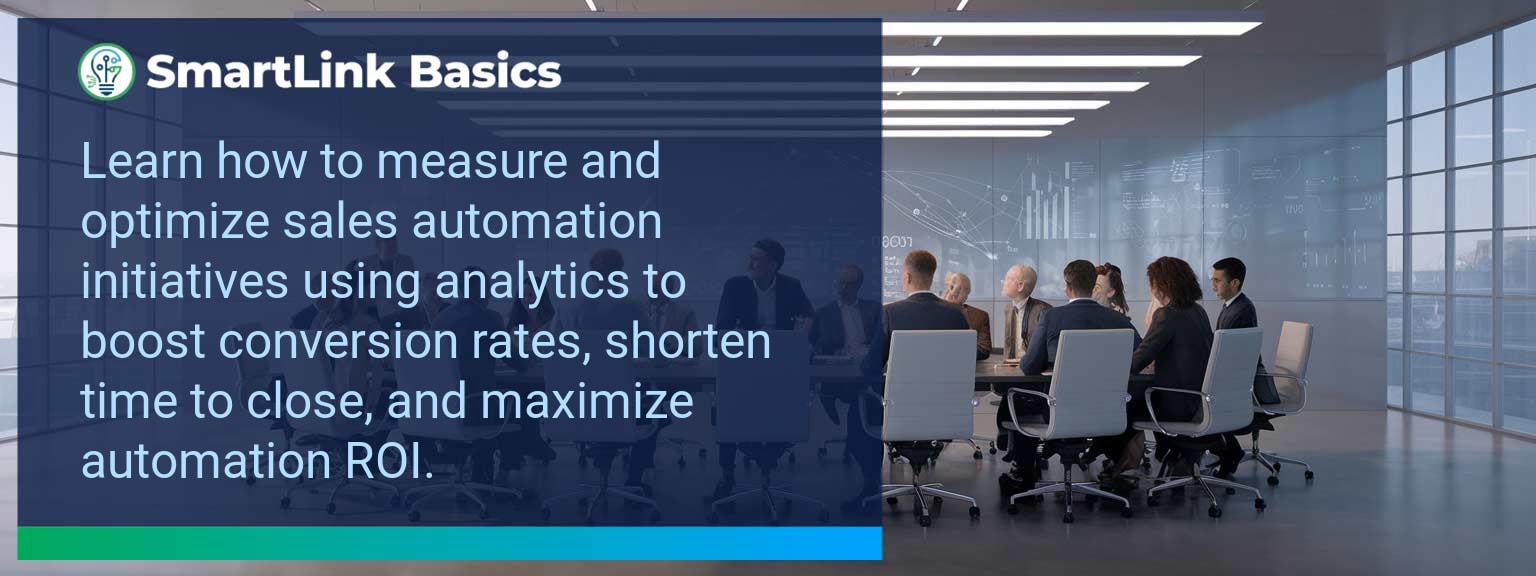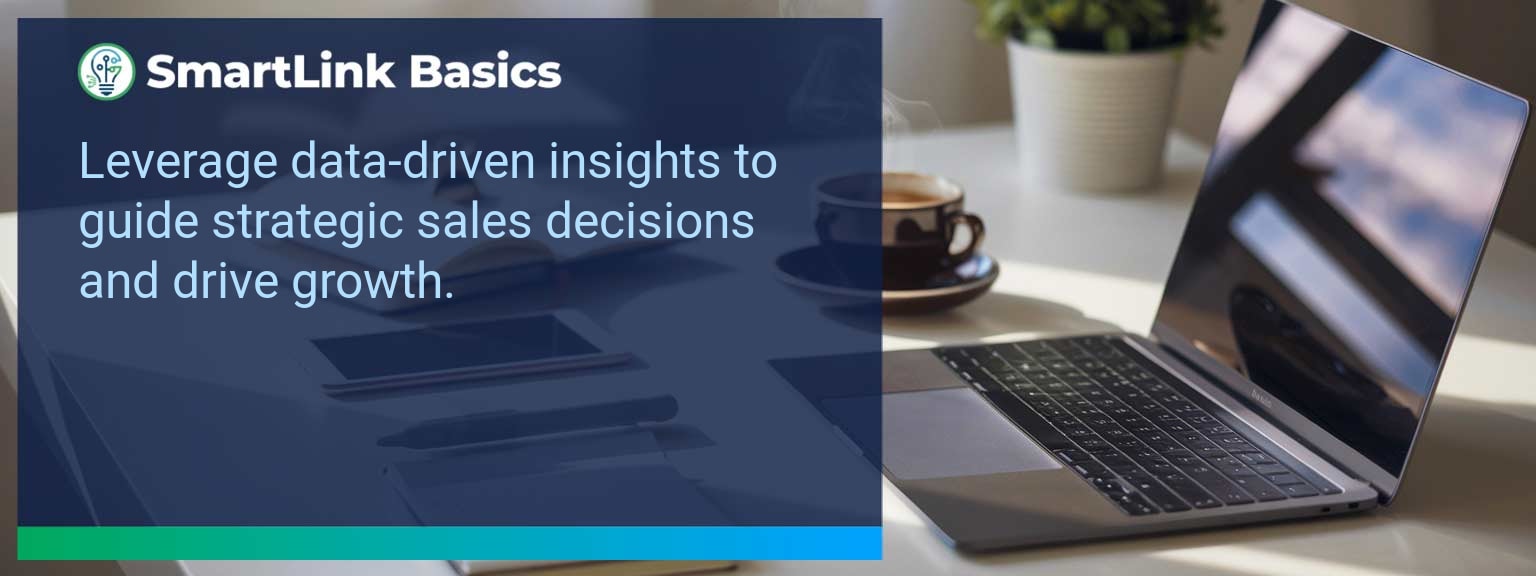Industry data shows that organizations adopting AI-driven automation achieve cost reductions of up to 30% while accelerating sales cycles by 20% or more (McKinsey, 2024). For sales leaders, AI automated workflows now define competitive advantage, enabling teams to reallocate time from repetitive tasks to high-value engagements. At SmartLink Basics, we help decision-makers implement these systems strategically, ensuring they integrate with existing revenue operations. In this article, you’ll see how AI automated workflows power business outcomes, the common obstacles that slow adoption, and practical steps to optimize processes. You’ll walk away with proven examples, a 90-day action blueprint, and measurable KPIs to track results.
- Automate repetitive administrative and CRM updates with AI.
- Integrate machine learning to personalize outreach at scale.
- Streamline approvals, quotes, and contract workflows for speed.
- Use predictive analytics to prioritize sales opportunities.
- Track adoption and performance with targeted metrics.
AI Automated Workflows: What Changed and Why It Matters
AI adoption has shifted from experimental to operational, making automated workflows a standard in high-performing sales organizations. The real advantage lies in combining workflow automation with artificial intelligence workflows to optimize every step of the revenue process. Sales leaders now use AI to synchronize touchpoints, reduce manual inputs, and ensure faster execution. For example, a B2B SaaS leader introduced automated lead enrichment and routing, cutting qualification time by 60%. Actionable insight: Audit processes for time-intensive handoffs and apply AI where repeatability is high.Redesign the Revenue Operating System With AI Automated Workflows
ICP, Segmentation, and Targeting AI-enabled segmentation uses historical wins, firmographic, and behavioral data to dynamically update ICP profiles. This ensures targeting precision without quarterly re-work. Pipeline Architecture Automated workflows push opportunities through the right stages based on engagement signals. AI flags at-risk deals for intervention. Plays and Messaging Integrated automation tools deliver personalized sequences based on buyer activity, increasing relevance at every touchpoint. Operating Cadence AI schedules follow-ups, forecast calls, and account reviews based on actual pipeline movement rather than static calendars. Actionable insight: Implement automation that adapts in real-time to both internal and buyer-driven events.Common Obstacles To Achieving Seamless Automation
The most frequent challenges are fragmented systems, inconsistent data quality, and cultural resistance. Without a unified data layer, automation amplifies errors rather than solving them. Coca-Cola Europacific Partners reported needing a full data governance upgrade before AI could improve sales workflows. Leaders must first assess infrastructure readiness and train teams to trust AI-influenced recommendations. Actionable insight: Before deployment, establish clean data practices and a single source of truth.Implementing AI To Optimize Workflows
Effective deployment of AI process optimization starts with mapping current-state processes, identifying friction points, and matching them with automation tools. For example, automating proposal generation based on CRM opportunity data can reduce turnaround from three days to one hour. Solutions combining business process automation platforms with machine learning integration enable continuous performance improvement. Actionable insight: Pilot in one high-impact stage, measure, and then expand.Tangible Benefits From Automated Processes
The benefits extend beyond time savings — sales leaders gain a scalable system. Tangible outcomes include faster quote-to-close, higher lead conversion, and better forecast accuracy. A manufacturing firm implemented AI-assisted order processing and cut errors by 40%, improving on-time delivery rates. Actionable insight: Track both speed and accuracy to measure workflow automation effectiveness.Metrics That Matter
| Category | Metric | Definition | Target |
|---|---|---|---|
| Leading | Workflow Completion Rate | % of automated sequences executed without manual intervention | 95%+ |
| Leading | AI Suggestion Adoption Rate | % of AI-generated action recommendations executed by reps | 80%+ |
| Lagging | Cycle Time Reduction | Decrease in time from lead entry to closed-won | 20%+ |
| Lagging | Revenue Per Rep | Average sales revenue generated per sales rep per quarter | +15% YoY |
| Quality | Automation Error Rate | % of workflows that trigger incorrect outcomes | <1% |
| Quality | Customer Satisfaction Post-Automation | Average CSAT score after automation implementation | ≥ 4.5/5 |
Innovations And Next Steps For AI Automation
Emerging capabilities like AI-generated playbooks, intent-driven dynamic routing, and integrated AR for virtual product demos are shaping the next wave of sales automation. Companies integrating these tools early will outpace competitors in speed and personalization. Actionable insight: Stay ahead by testing emerging automation features quarterly and aligning them with evolving buyer expectations.Get the 90-day plan, coaching rubric, and dashboard template to operationalize AI in your enablement program.
Turning AI Automation Into a Revenue Multiplier
AI automated workflows are now a strategic lever for predictable, scalable growth. This guide outlined current applications, adoption challenges, a 90-day execution plan, and measurable success criteria. To make automation pay off, sales leaders should integrate tools into one cohesive operating system and review results monthly for continuous improvement. Access more AI-driven sales enablement resources from SmartLink Basics to design a high-performance automation strategy. Strong sales leadership is the single greatest predictor of whether a sales team sustains high performance or plateaus. At SmartLink Basics, we have seen top organizations achieve outsized results by deliberately balancing autonomy with accountability — a formula that frees sales talent to execute without sacrificing operational discipline. This approach matters now because growth conditions are tougher and competition is more aggressive. Sales managers and executives who master it will consistently outperform the market. This article explains the practical framework, challenges, solutions, and long-term strategies you can apply to strengthen leadership in sales, accelerate sales team growth, and build resilient revenue engines.- Define and communicate clear performance expectations linked to business outcomes.
- Grant measured autonomy that empowers decision-making without eroding standards.
- Use data-led performance management to trigger coaching at the right moments.
- Align team motivations with organizational strategy to improve engagement.
- Continuously refine the operating cadence to keep execution sharp.
What Changed And Why It Matters Now In Sales Leadership
The environment for sales leadership has shifted. Performance management used to rely on simple activity tracking, but modern teams need adaptive leadership that blends flexibility with structure. Digital communication, distributed teams, and advanced buyer expectations require leaders to operate in short, high‑impact cycles while sustaining clear accountability. One example: a mid-sized B2B software firm improved close rates by 21% after adopting weekly win‑loss reviews while still giving account executives authority to adjust deal strategies. Actionable insight: set non‑negotiable metrics, but allow the team freedom in execution methods — reinforcing trust and ownership.Common Obstacles In Driving Team Success
Even seasoned leaders encounter recurring challenges in achieving consistent sales team growth. The most frequent include: unclear role definitions, misaligned incentives, ineffective coaching frequency, and reporting bloat that drains selling time. These problems compound when leadership in sales fails to clarify decision rights. For example, a manufacturing sales division underperformed because reps had to wait on management approval for routine discount decisions. Removing this bottleneck raised conversion speed by 14%. Actionable insight: map decision authority for each operational area, then communicate it with absolute precision.Balancing Autonomy With Accountability In Sales Leadership
At the core of effective sales leadership is achieving the right equilibrium between empowering the team and enforcing accountability standards. This means developing a framework where each sales rep knows exactly what success looks like, while having latitude to reach targets through their own approach. Sales coaching plays a critical role here. By using targeted 1:1 sessions with metrics-driven feedback, leaders guide performance without micromanaging. A strategic leadership stance fosters innovation while ensuring accountability through visible scorecards. Actionable insight: deploy a lightweight dashboard that shows team performance against leading and lagging indicators, accessible to all members.Metrics That Matter
| Category | Metric | Definition | Target |
|---|---|---|---|
| Leading | Qualified Pipeline Coverage | Ratio of pipeline value to quota | 3x coverage |
| Leading | Sales Call Quality Score | Evaluated via recorded calls against a rubric | ≥85% |
| Lagging | Closed‑Won Revenue | Total revenue from won deals in a period | ≥100% quota |
| Quality | New Customer Retention | Percentage retained after 12 months | ≥90% |
How Strong Leadership Transformed Team Results
In one enterprise case, a sales VP implemented a clarified decision rights matrix, upgraded coaching cadence, and realigned incentives to prioritize gross margin over volume. Within two quarters, win rates improved 18%, average deal size rose 12%, and seller tenure stabilized. The key driver was not technology — it was a disciplined application of leadership skills and performance management principles that allowed each team member to act decisively while remaining fully accountable. Actionable insight: review your last three lost deals for decision bottlenecks and coach your team toward faster, informed choices.The Next Evolution Of Sales Strategy
Future-ready sales teams will operate with even tighter integration between strategic leadership and frontline execution. This will mean dynamic territory models, AI‑augmented forecasting, and adaptive skill development plans. Leaders who establish clear accountability structures today will adapt more easily tomorrow. Actionable insight: build a quarterly reset workshop into your operating cadence to revisit targets, refine messaging, and remove barriers to autonomy.Get the 90-day plan, coaching rubric, and dashboard template to operationalize AI in your enablement program.









